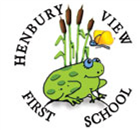Design and Technology
'Design is a funny word. Some people think design means how it looks. But of course, if you look deeper, it's really how it works.'
Intent
At Henbury View First School, we value the importance of Design and Technology. The Design and Technology curriculum at Henbury View prepares children to deal with tomorrow’s rapidly changing world. It encourages children to become independent, creative problem solvers and thinkers - both as individuals and as part of a team. It enables them to identify the needs and opportunities offered by a product and to respond to them by developing a range of ideas and by making products and systems. Through the study of Design and Technology, they combine knowledge with practical skills to develop an understanding of aesthetic, social and environmental issues, as well as an understanding of function and industry. This allows them to reflect on and evaluate past and present technology, its uses and impacts.
At Henbury View, we intend Design and Technology to be creative and practical and provide children with the chance to problem solve and develop their own creative ideas. We aim to provide our children with the opportunity to use their imagination to design and make products within a variety of contexts, to provide motivation and meaning to their learning. Children will be taught a range of topics including mechanisms, textiles, food technology, structures and electrical systems (in Key Stage 2). Through hands-on, practical experiences we aim for children to leave Year 4 with knowledge and skills of DT which will inspire children to be the chefs, engineers, sculptures, carpenters, designers and architects of the future. We recognise the important role of DT in preparing our children with skills for life which will enable them to be creative individuals who enjoy problem solving and feel secure with creative risk-taking in an increasingly technological world.

Implementation
The teaching and implementation of the Design and Technology Curriculum at Henbury View First School is based on the National Curriculum in KS1 and KS2 and Development Matters in EYFS to ensure a well-structured approach to this creative subject. The Design and Technology curriculum is structured into 5 main strands as derived from the National Curriculum:
- Mechanical Systems
- Structures
- Textiles
- Cooking and Nutrition
- Electrical Systems
A unit of planning from each of the strands is in place for each year group which builds on previous learning and ensures progression in both skills and knowledge and understanding throughout the school. Children design products with a purpose in mind and an intended user of the products. Food technology is implemented across the school with children developing an understanding of where food comes from, the importance of a varied and healthy diet and how to prepare this. Design and technology is a crucial part of school life and learning and it is for this reason that as a school we are dedicated to the teaching and delivery of a high quality Design and Technology curriculum; through well planned and resourced projects and experiences. Design and Technology also embeds our Henbury lily pads. It is an inspiring, rigorous and practical subject, requiring reflectiveness, resourcefulness, and responsibility. Pupils design and make products that solve real and relevant problems within a variety of contexts. Children learn to take risks, be reflective, innovative, enterprising and resilient. Through the evaluation of past and present technology they can reflect upon the impact of Design Technology on everyday life and the wider world.

Key Threads
At Henbury View, we have key threads that run through and across year groups. These will continually be revisited and explored across the academic journey of a child at Henbury. Each thread is underpinned by key vocabulary and knowledge that will be explicitly taught in Design and Technology. The key threads are:
|
Research |
Skill development |
Evaluation and Analysis |
Opportunities for creative work |
Opportunities to plan towards a product |
Exposure to and use of multi-media |
Great artists and designers |
Clarity of purpose |

